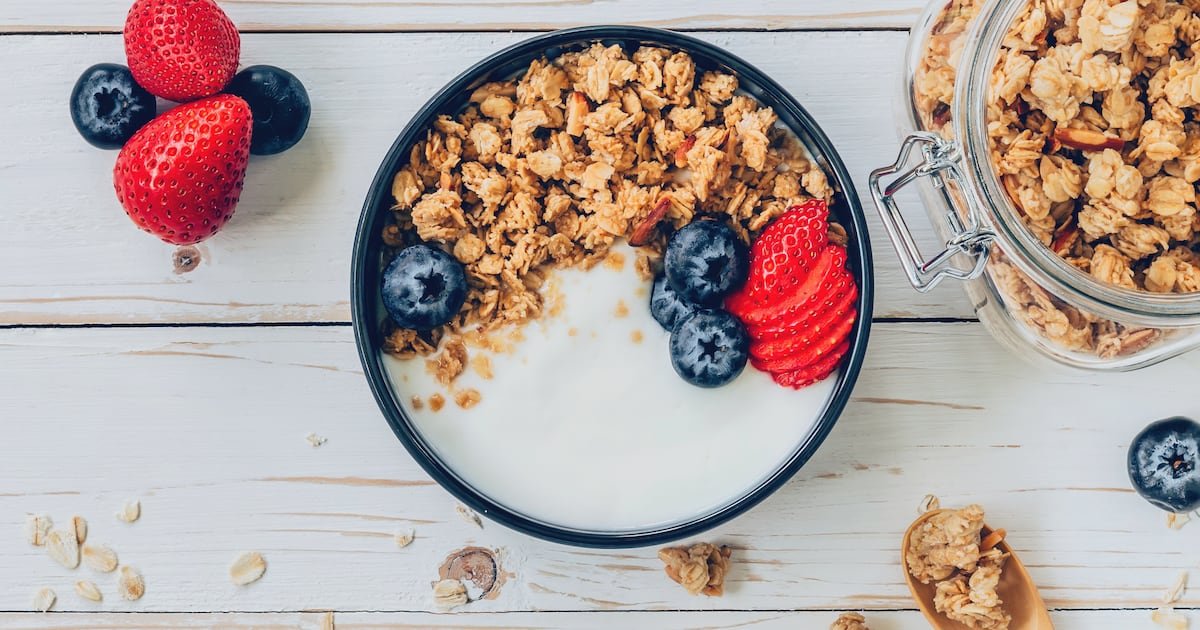
US yogurt and beverages increased 11.6% year over year in dollar sales terms, amounting to $11.8bn in the 52 weeks to April 20, 2025, according to Circana. Unit sales also rose by 7% YoY to 4.38 million, suggesting healthy demand and more than favorable profit margins for yogurt brands.
Globally, the market is valued at $142bn (GlobalData, Market size 2023 full-year data, last updated October 2024) and continues to expand on the back of health and wellness trends such as protein and weight loss.
According to Innova, more than half (52%) of consumers who have increased their yogurt consumption perceive the category as ‘healthy’; and more than a quarter (28%) have increased consumption due to lifestyle changes.
Which nations consume the most yogurt?
European countries such as Switzerland (33kg per capita per year), Bulgaria (26kg) and France (25kg) are some of the top global yogurt consumers according to Innova.
The market insights agency estimates that Israel is the single largest yogurt consumer in the world, at 37kg of yogurt per head consumed per year; with Portugal (25kg), Estonia (24kg) and Sweden (22kg) also among the top consumers globally.
And even though Europe is a mature market, yogurt consumption is still set to climb: GlobalData estimates a 3.7% CAGR 2023-2027 across Europe, Middle East and Africa, with sales set to near $41bn by 2027.
This far surpasses growth forecasts for North America ($14.5bn) and Latin America ($11.7bn) combined.
Which are the fastest-growing markets for yogurt?
In terms of expansion, it’s Latin America (6.2% CAGR) and Asia Pacific (5.3% CAGR) that are the fastest growing regions.
Growth in Latin America is led by Argentina according to GlobalData at 12.7% CAGR, with children’s yogurt being a high-growth category in that market.
Asia-Pacific – where sales topped $75.5bn in 2024 – is also fast-growing, with India (8.7% CAGR) experiencing the fastest increase along with Vietnam and Australia.
What’s driving category growth?
There is no newsflash here: demand for high-protein, clean label and functional foods are the main reasons why yogurt dollar and unit sales globally are on the rise.
Crucially, these claims are not just marketing: yogurt has science-backed health credentials to lean on, which fosters consumer trust and fuels product innovation around gut health and wellness.
How can brands lean on health and wellness messaging to increase appeal?
Positive metabolic health impacts
Yogurt’s unique matrix supports metabolic health, with academic research suggesting that intake has a positive impact on obesity and type-2 diabetes.
Studies have shown that regular yogurt consumption is associated with lower body weight; and there is also limited evidence that eating yogurt may reduce the risk of type-2 diabetes.
The latter has led to the introduction of an FDA-approved health claim in the US, with manufacturers able to say on-pack that yogurt ‘may reduce the risk of type 2 diabetes according to limited scientific evidence’.
This offers a way for brands to differentiate through a science-backed claim and highlight yogurt’s functionality and health credentials.
Research has also found that yogurt consumption can help counter obesity by enhancing BCAA metabolism.
In a nutshell – see ‘sources’ below for more information – yogurt consumption prevents the decline of beneficial metabolites (BCHA), which are in turn associated with better insulin sensitivity.
Unique matrix that promotes satiety, gut health
Studies have also shown that dairy proteins casein and whey both promote satiety; while calcium has fat loss-promoting effects and may reduce appetite.
And since yogurt is a fermented product, its live cultures naturally enhance the gut microbiota.
For example, consumption of cultured yogurt increases the levels of lactic acid bacteria in the gut, which improves insulin sensitivity and reduced inflammation.
Also read → Ambient high-protein shakes: A $7bn US market
Yogurt consumers make healthier food and lifestyle choices
Yogurt consumption has been associated with a better diet quality, suggesting that those who eat yogurt make healthier food choices as a whole.
Some studies also suggest that yogurt consumers are generally more health-conscious, smoking less and exercising more.
Also read → Why kefir is attracting big-brand interest
Ultimately, brands can leverage yogurt’s health halo by positioning it as a natural functional food that promotes wellbeing.
This can be done by highlighting high protein, low-sugar content in plain products such as Greek yogurt and skyr; and by spotlighting the presence of live cultures in drinking yogurt and kefir, among other strategies.
Leveraging format innovation is also key – with shoppers increasingly seeking to combine convenience and superior nutrition, diversifying from traditional categories into on-the-go options like snack pots, pouches and RTD formats can boost brand awareness while reaching a wider consumers at different eating occasions.
Breakfast is still the most popular occasion for yogurt consumption, according to Worldpanel by Numerator, with an increase of 24% YoY, it accounts for 33% of yogurt consumption occasions.
At the same time, fewer people eat yogurt at dinner (28% of yogurt occasions), with 78% of occasions taking place during dessert.
This suggest opportunities for brands to highlight yogurt’s appealing texture and mouthfeel and how it can be paired with fruit, cereal, or evening desserts.
Source:
Tremblay, A., Drouin-Chartier, J. P., Marette, A., & Drapeau, V. (2025). Yogurt and health: a focus on its matrix. Critical Reviews in Food Science and Nutrition, 1–10. https://doi.org/10.1080/10408398.2025.2524472

